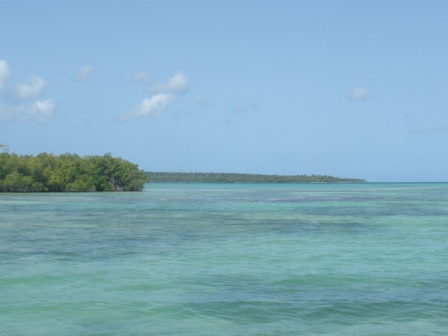Western Hemisphere Migratory Species Initiative
On-going Projects
Publications
Past Events
Western Hemisphere Migratory Species Initiative

Participating Countries: OAS Member States
Context:All of the countries in the Western Hemisphere share a common biological, cultural and economic heritage — our migratory birds, whales, bats, sea turtles, and butterflies. As these species' ranges span international boundaries, conservation stakeholders throughout the Americas need to work closely together to ensure the protection and conservation of their myriad habitats and migratory routes. In this context, the Western Hemisphere Migratory Species Initiative (WHMSI) was developed by wildlife agency directors and other senior officials of the Americas as a cooperative hemispheric non-binding mechanism to conserve shared migratory species.
Objective: To significantly enhance the conservation of shared migratory species throughout the Americas by strengthening institutional and human capacity, political commitment, international cooperation, and public-private partnerships at regional, national and local levels by building upon existing WHMSI and other migratory species efforts.
Description: Through the support of the U.S. Fish and Wildlife Service, the DSD will implement a small-grants program in OAS Member States. With the assistance from the WHMSI Steering Committee, the DSD has selected and funded proposals from the following six institutions of up to US$20,000 awarded on a competitive basis to support conservation efforts of marine migratory species and habitats of greatest concern:

|
N°
|
Institution
|
Country
|
Amount (USD)
|
Title
|
Proposal
|
Output
|
Output
|
| 1 |
Centro Nacional Patagónico (CENPAT)/Organismo
Provincial para el Desarrollo Sostenible(OPDS), Dirección
de Áreas Naturales Protegidas
|
Argentina
|
19,982
|
Estrategias para Fortalecer Acciones de Conservación en un Humedal Clave para las Aves Playeras Migratorias: Bahía Samborombón, Argentina |
|||
| 2 |
Fundación Cethus
|
Argentina
|
18,612
|
Detección acústica y educación ambiental: Dos componentes esenciales para la conservación de la Franciscana (Pontoporia blainvillei |
|||
| 3 |
Caribwhale
|
Dominica
|
20,000
|
A Biogeographic Mapping Network, development of a mobile
application for Regional Cetacean Monitoring
|
|||
| 4 |
Mexico-Brazil-Ecuador
|
20,000
|
Shark Identification Workshop for Law Enforcement |
||||
| 5 |
MARVIVA Foundation
|
Panama
|
20,000
|
Identifying Replicable Shark Conservation Strategies to Support Balanced Marine Ecosystems |
|||
| 6* |
Sustainable Grenadines (SusGren), Inc.
|
St Vincent and the Grenadines
|
19,580
|
Sharing Best Management Practices for Coral Reef and Mangrove Conservation in the Grenadines |
* The Proposal from Sustainable Grenadines Inc. is funded by the Ocean Foundation, member of the WHMSI Steering Committee


